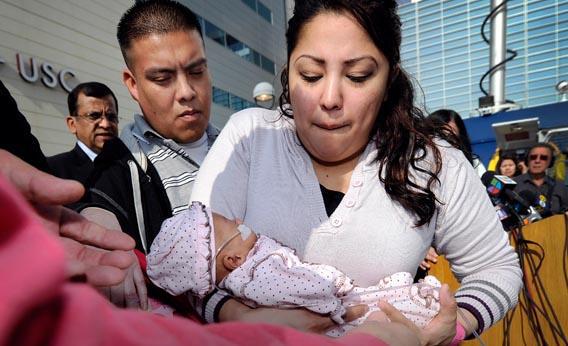Whether babies should or should not be carried does not seem like an especially tricky question. (Sample answer: Why not? Seems to work!) It does not seem like a subject that people could spent millennia coming to radically different conclusions about. But they have!
These days, the newer the baby, the more likely we are to carry it. (For good reason.) But the ancient Greek physician Soranus thought that babies, especially boys, should not be carried until four months of age. Carrying posed the risk of severe testicular injury, Soranus thought. Today we worry about raising children who aren’t well-adjusted; the Greeks worried about raising children who weren’t eunuchs. This bias against carrying held through medieval times, apparently.
Meanwhile, at the same time Soranus pronounced this, the many hunter-and-gatherer societies south of him in Africa were obliviously carrying their infants. They’d never done anything but carry their infants. There is some logic here; the anthropologist John Whiting established that infants in cold climates are more likely to be swaddled and put down in a cradle, while those in hot climates are more likely to be carried in a sling. But once we could control the temperature indoors, we had no clue what to do: In this country, for the first half of the 20th century, the medical consensus was something like, “Carry your child? Why are you even touching your child?” (I exaggerate only slightly; this was an era when experts were telling parents not to kiss their babies.) The sudden popularity of slings, beginning in the 1970s, was a radical reversal. It pulped decades of childrearing wisdom.
If you take the long view—the really, really long view—all this indecision dates back to a pivot point in human development. As I write in Baby Meets World, our hominid ancestors carried their infants without trying—that was the advantage of hairy bodies and an opposable toe. When they lost both, they squandered an extremely efficient method of child care. Suddenly, parents had to think about what to do with this helpless creature. (Those parents were pretty clever: They invented slings.) In a sense, the search for a decent daycare began with the moment, millions of years ago, that those hominid infants no longer stuck to their parents.
It’s always tempting to see the present as the final point in a journey—that we have corrected the mistakes of the past. We now understand that babies have basic socio-emotional needs; we let ourselves pick up our babies; we carry them when they want to be carried. But answers to the most basic childrearing questions tend to see-saw wildly: Chances are that in the far future, someone will read about your Ergo with abject horror.
Whether they will assume that the Ergo turned all baby boys into eunuchs—that’s another question entirely.
***
Nicholas Day’s book on the science and history of infancy, Baby Meets World, will be published in April. His website is nicholasday.net.
